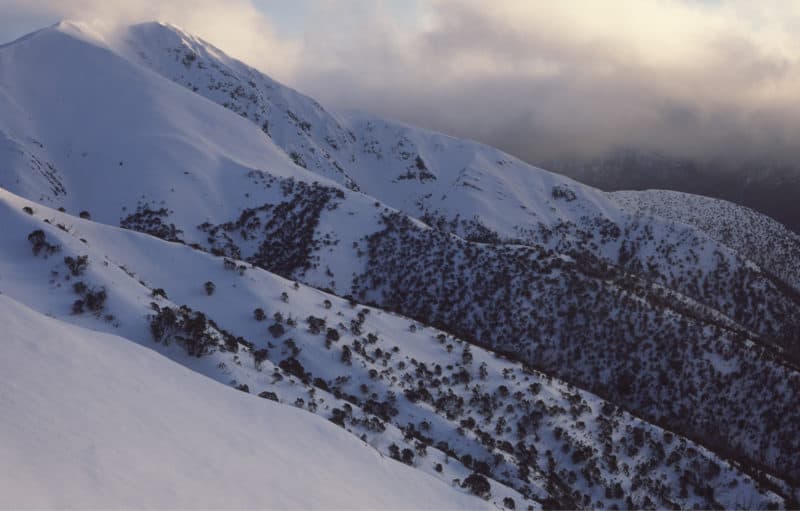PARK WATCH Article September 2024 |
Matt Ruchel, Executive Director, reports on the progress of nature protection at home and abroad
Australia leads the world in mammal extinctions, with one-in-five Australian mammals threatened and declining. An astounding 19 of our ecosystems show signs of collapse but don’t panic just yet – there is hope amongst the doom and gloom. The Federal Government is embarking on an ambitious protection plan. But the rubber won’t hit the road without decent funding.
The Australian Government has committed to a national target to protect and conserve 30 per cent of land and 30 per cent of marine areas by 2030 (referred to as the ‘30 by 30 target’). All state and territory environment ministers have agreed to work together to achieve this ambitious goal. The target aligns with the Kunming-Montreal Global Biodiversity Framework under the Convention on Biological Diversity.
In June 2024, the Federal Government released a consultation on Achieving 30 by 30 on land: Draft National Roadmap for protecting and conserving 30 per cent of Australia’s land by 2030. It built on previous work such as the National Reserve System Strategy (NRS), adopted by all Australian governments in 2009. While it required each state and territory to prepare a five-year implementation plan, it was never done in Victoria.
According to Victoria’s key strategy Protecting Victoria’s Environment – Biodiversity 2037, the estimated gap in protected areas required to meet Australia’s criteria for a comprehensive, adequate and representative reserve system is 2.1 million hectares. This figure accounts for both public and private land – and that was before new 30 by 30 stretch targets.
Right now, the Australian Government allocates just 0.1 per cent of total spending on protecting our unique and vulnerable nature. This is completely inadequate to achieve the 30 by 30 commitments. Federal funding towards nature must rapidly and radically increase if we are to have any chance of halting (and reversing) the current crisis.
If we invested just one per cent of the federal budget in nature, we could stop that decline by 2030. Without it, we will not meet our global commitment.
The draft Roadmap introduces a new form of conservation area as part of the Other Effective area-based Conservation Measures Framework (OECMs). It says, which VNPA supports:
A site’s suitability for Protected Area designation should be considered first and Conserved Area recognition considered where formal Protected Area designation is not possible, appropriate or supported.
There is, however, a real risk states and territories might exploit this to green light paper protection while claiming biodiversity outcomes.
Any 30 by 30 initiatives on land shouldn’t be just a race to cover the most hectares. Much of our surviving bush is rich in threatened wildlife and of high conservation significance, but it’s often in smaller blocks, whereas the less intensively developed states have larger blocks.
This is writ large by the high number of individual reserves in Victoria – over 4000 individual reserves, covering four million hectares. We have almost twice as many individual reserves as other jurisdictions, even though they have much larger networks in terms of total hectares.
Victoria is currently third from the bottom in both proportion protected (about 18 per cent of the state) and raw hectares managed for conservation. To achieve any national target, we must position protected and conserved land strategically. Comprehensive, Adequate, and Representative (CAR) principles are traditionally used to identify gaps in the reserve system. These are then applied to bioregions and subregions.
The Roadmap notes the importance of effective land management. This includes active participation of First Nations people, such as support for Indigenous Protected Areas – currently scarce in Victoria. Joint or co-management of national parks is becoming more common across the state. Increased and targeted resources would better meet the aspirations of many Victorian Traditional Owners.
With the end of native forest logging there’s a clear question about the future of almost two million hectares of Victorian state forest. The processes for better protection in the Central Highlands and Yarra Ranges are currently being done through an Eminent Person Panel for Community Engagement, with input from the Victorian Environmental Assessment Council (VEAC). A report is expected at the end of September 2024, to be followed by further VEAC assessment.
The Great Outdoors Taskforce has commenced consultation in East Gippsland and is expected to report in May 2025.
We know that biodiversity across the country is in decline. None of our biodiversity indicators look good, national or state. A new vision is clearly required and it’s about time the Commonwealth put some money in to give nature a fair go.
- Read the latest full edition of Park Watch magazine
- Subscribe to keep up-to-date about this and other nature issues in Victoria
- Become a member to receive Park Watch magazine in print
